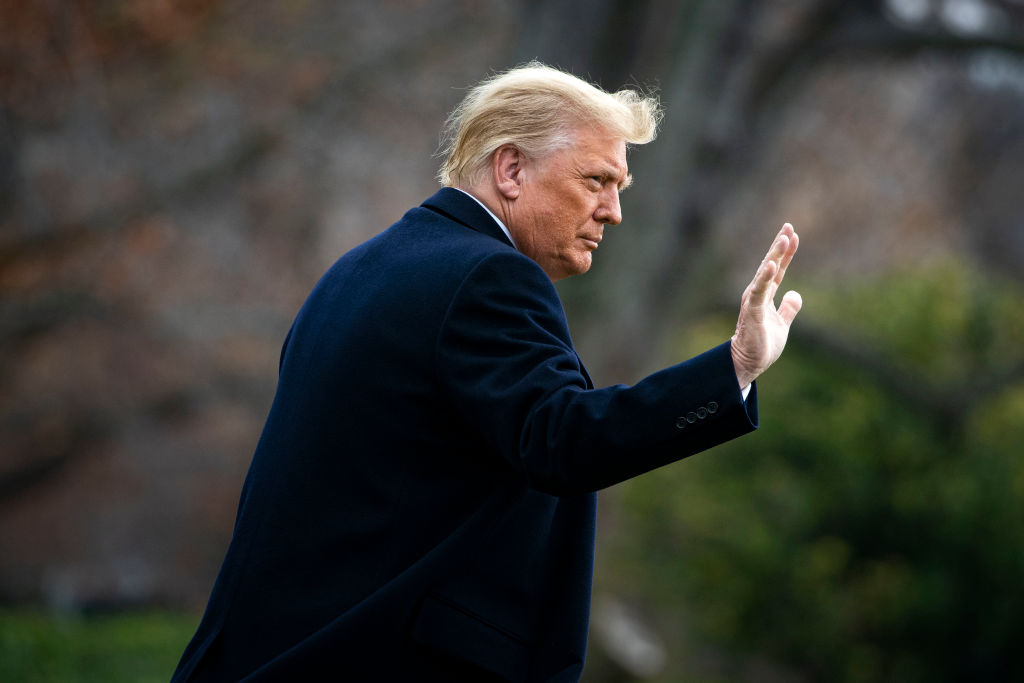Renewed moves to impeach President Trump in his final days in office, following the storming of the Capitol Building, are gathering steam in Washington. To add further to the drama of the past week, Twitter announced yesterday that it was permanently suspending the President. Nancy Pelosi went as far as calling on the chairman of the Joint Chiefs of Staff to limit Trump’s access to the nuclear codes, as some had attempted with Nixon at the height of his Watergate meltdown.
As for the Republican establishment – especially those in the orbit of Senate Leader Mitch McConnell – they have wanted Trump out of the picture ever since Election Day. As I suggested might happen on Tuesday, the President’s hijacking of the Georgia runoffs to spread wild conspiracy theories, suppressing his own party’s vote, riling up the opposition and repulsing moderates, succeeded in snatching defeat from the jaws of Senate victory.
As such, McConnell and co. were spitting blood even before rioters brought Capitol Hill to its knees. Hitting out at those making spurious accusations to challenge the election result, the Senator warned such moves would push democracy into a ‘death spiral’. Just minutes later, the Senate floor would be occupied and its members in hiding.
McConnell plays a long and ruthless game and has – in his six years as Majority Leader – been more successful than most. He cemented a six to three conservative majority on the Supreme Court, a Holy Grail for Republicans for a generation, through sheer political gall: refusing Obama’s nomination of Merrick Garland for over a year, and then pushing Amy Coney Barrett through in a matter of weeks. In this task, Donald Trump has been very useful to the Senator.
That use, however, has outstayed its welcome – and it seems to be quickly dawning on McConnell that this ‘death spiral’ may be hard to avoid without fully removing Donald Trump and his machine from the party. It may be that the Senator is the congressional leader with the most to gain from Nancy Pelosi’s impeachment success.
A fact few people seemed to have realised, before it was tweeted out by Lady Gaga yesterday, is that the Senate throwing out Donald Trump from office would legally bar him from running in 2024. The idea that the Republican establishment could rid themselves of their tormentor with just a handful of votes is perhaps too enticing a prospect not to dismiss. Indeed, McConnell put out a note to GOP Senators last night saying that any trial would start on 20 or 21 January, after Donald Trump has left office – the primary practical effect of which would be preventing a future run.
So how many GOP Senators would be needed? The Senate requires a two-thirds majority to convict. By pushing the trial back into late January, it seems very possible that the Democratic victories in Georgia will be certified in time for Raphael Warnock and Jon Ossoff to be sworn in before the vote. Presuming all Democrats vote in favour, that means 17 Republicans are required (18 in the event the Georgia Democrats remain unseated).
That seems a tall order, but it’s worth breaking down the possible paths. The first tranche of Trump-sceptics and moderates are fairly straightforward: Mitt Romney of Utah (the first Senator to ever vote to convict a member of his own party in an impeachment trial), Ben Sasse of Nebraska, Susan Collins of Maine and Lisa Murkowski of Alaska. Indeed, Murkowski has hinted heavily that her days in the Republican Party may be numbered, and we can expect her to be courted aggressively by the Democrats’ Chuck Schumer in the coming months.
Then there are more personal and political considerations. Most Republican Senators, whatever they think of the President, don’t want to incur the wrath of his supporters in a future primary – even though his removal from Twitter may end up blunting some of that threat. Of course, retiring Senators don’t have such worries: Pat Toomey of Pennsylvania, a fierce critic of those objecting to the election results, and Richard Burr of North Carolina seem good bets. It also seems unlikely that Richard Shelby of Alabama, Chuck Grassley of Iowa or Jim Inhofe of Oklahoma, all in their late 80s, will seek to run again.
As the Senate elects members in thirds – with 33 seats up for six year terms every two years – there are then those who, having just been re-elected last November, don’t have to worry about primaries until 2026. Sasse and Collins are among this number, as are Bill Cassidy of Louisiana (the lone Republican in the state’s congressional delegation not to object to the election results), Shelley Moore Capito of West Virginia, Mike Rounds of South Dakota, Jim Risch of Idaho, Dan Sullivan of Alaska and – of course – Mitch McConnell himself, though he may wish his support to remain tacit.
Of course the Senators who most want Trump out of the picture are those who themselves want to run for President in 2024 – and want to inherit his base – most notably Ted Cruz of Texas and Josh Hawley of Missouri. They will doubtless give fiery speeches on the Senate floor in defence of the President, while hoping impeachment succeeds. Such are the moving parts.
All this still falls short of those needed to convict, and Lindsey Graham of South Carolina – a shrewd observer of these matters – has already declared that the numbers simply aren’t there. He’s very likely right, and the risk for an individual Senator is only worth it if they believe they’ll find themselves on the winning side.
However, the Republican establishment may live to regret not doing everything in their power to stop a future Trump candidacy at a time when it was in their hands.






Comments